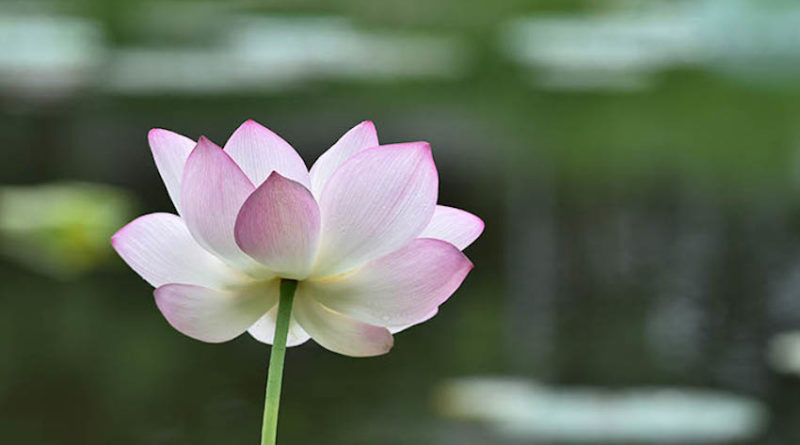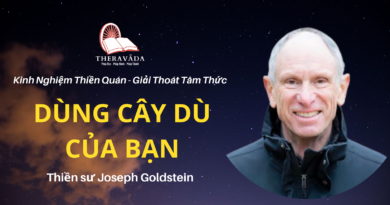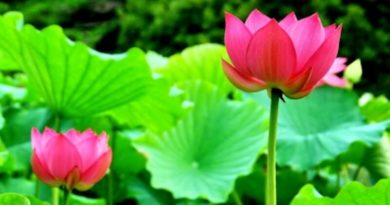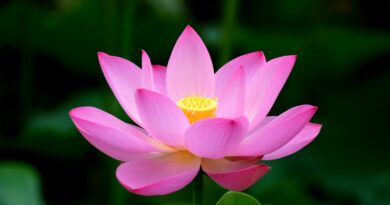A DISCOURSE ON THE ABODE OF THE NOBLE ONES – THE STORY OF TAMBADATHIKA
A DISCOURSE ON THE ABODE OF THE NOBLE ONES – THE STORY OF TAMBADATHIKA
Mindfulness even for a few moments ensures protection from sa”msaaric dangers as is evident in the story of Tambadathika.
Tambadathikka was a public executioner in the life-time of the Buddha. On the day of his retirement he was about to drink milk-gruel when there appeared thera Saariputta who had come apparently in search of food. Because of his strong faith Tambadathika promptly offered the milk-gruel. After drinking it, the Thera gave a talk on alms-giving, morality, insight-meditation and the Noble Path. Tambadathika could not follow the talk very well because he became stricken with remorse when he thought of his evil deeds in the past. He told the Thera about his unhappiness.
Questioned by the Thera, Tambadathika said that he did not do the evil deeds of his own free-will, that he had to carry out the king’s order. “In that case,” asked Sariputta “would those evils be of your own making?” This question was cleverly designed to ease his conscience. His anxiety being thus laid to rest, he was able to reflect on the thera’s sermon and at last he attained a kind of insight-knowledge called anuloma~naa”na. Dhammapada commentary identifies it with the higher stage of equanimity. It is said that the bodhisattas in the holy order practised meditation till they attained anuloma~naa”na, but theirs is not the anuloma~naa”na of the path process (magga-vithi). The attainment of anuloma~naa”na of the path process means outright attainment of the path and its result (phala). The spiritual development does not end with the attainment of anuloma~naa”na. Moreover, a bodhisatta can attain the goal of the path only in his last life when he is about to become a Buddha. He cannot attain it in early lives. So the anuloma~naa”na attributed to the bodhisattas is the advanced stage of equanimity knowledge and the same may be said of the insight attained by Tambadathika.
Tambadathika became mindful as a result of his spiritual experience. Before long he was gored to death by a cow. His death formed the subject of conversation among the bhikkhus. The bhikkhus were much surprised when the Buddha told them that the man was reborn in Tusita heaven, that in spite of his evil deeds in the past, his mindfulness during the last moments of his life had protected him from the dangers of the lower worlds.
Through practice, mindfulness may become spontaneous as in the case of Dhanaa~njaanii, a lay follower of the Buddha. She was told by her husband not to say anything to extol the Buddha while his brahmit teachers were being entertained. Yet when she tripped, she at once uttered thrice the sacred formula: “Namo tassa bhagavato – Praise to the Blessed One, etc.”
Mindfulness in the face of suffering or death is very important since it helps to lessen pain and ensure good rebirth. The yogi who seeks to develop it requires four supports. In the first place he needs clothes, food, medicine and dwelling. He needs them not because of his craving for pleasure but because they form the basic necessities of life. To deny oneself these necessities of life means asceticism which was practised by some non-Buddhist sects in ancient India. In fact the bodhisatta himself resorted to it, but later on he gave it up as he realized that it served no purpose. The Buddha’s way is the middle way between asceticism and attachment to sensual pleasure.
The second support for the yogi is the fortitude of mind with which he contemplates physical and mental pain. He is prepared to face hardship or even death for the attainment of insight-knowledge. Meditation does not do any harm to health; on the contrary it is beneficial as is borne out by some yogis who regained their health after meditating for some time. There is the case of a woman who practised mindfulness and got rid of a growth in her womb, thereby making it unnecessary for her to undergo an operation as advised by her doctor.
The yogi should bear pain as far as possible. “Patience leads to Nibbaana,” says a Myanmar proverb. If a meditating yogi fidgets impatiently whenever an unpleasant sensation occurs, he will not be able to concentrate and without concentration, he cannot attain insight-knowledge. So patience or fortitude is one of the supports of the yogi.








